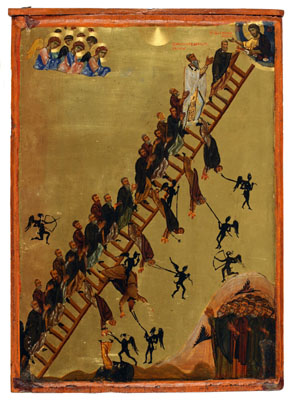“Byzantium”, at the Royal Academy, is a richly compelling exhibition, devoted to the ancient art and artefacts of the Byzantine era. The show ranges across more than twelve centuries, beginning in 330, with the founding of Constantinople by Emperor Constantine, and ending in 1453, when the city now known as Istanbul fell to the Turks and the once great Byzantine empire was finally brought to its knees. An unprecedented haul of masterpieces has been drawn from museums in the Ukraine, Egypt, Italy, Jerusalem and many other countries besides. They are exhibited in a sequence of nine, low-lit galleries. Each room houses a forest of plinthed glass cases, the design of which – whether deliberately or coincidentally – evokes the form of the Byzantine reliquary.
The most sacred relics of art on display at the Royal Academy include no fewer than nine large icons from the monastery of St Catherine, in Sinai – the collections of which, forgotten and overlooked until the 1960s, must be counted one of the great art historical rediscoveries of the twentieth century. There are glittering, solemn-faced icons from Kiev and Russia, great treasures from France and America, as well as a number of extraordinary works of goldsmithery – looted from Constantinople by Venetian mercenary soldiers – that have been released from the vaults of the treasury of St Mark’s Cathedral in Venice.
The result is an exceptional gathering of more than 300 objects – not so much an exhibition as a temporarily convened museum, devoted not only to the faith but to the broader culture of Constantinople and its empire in the Middle Ages. There is a gallery devoted to court life, housing objects that range from stunningly intricate gold earrings to a jewel-encrusted, filigree-fine gold body chain designed as an acentuating frame for the female...


